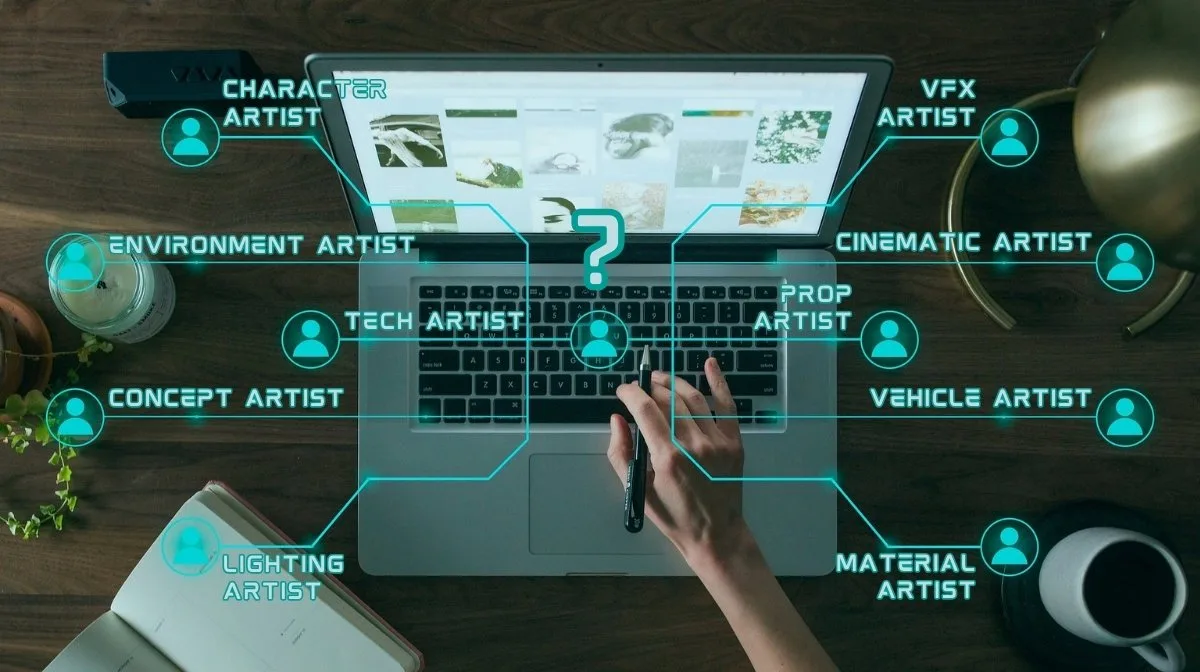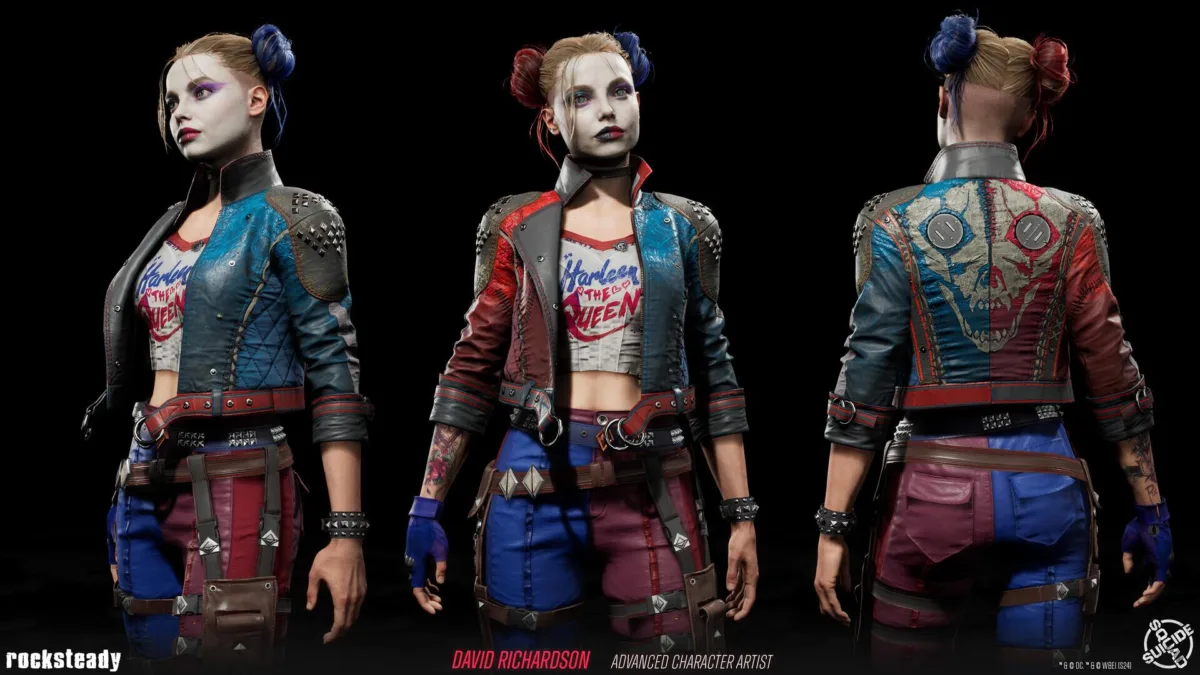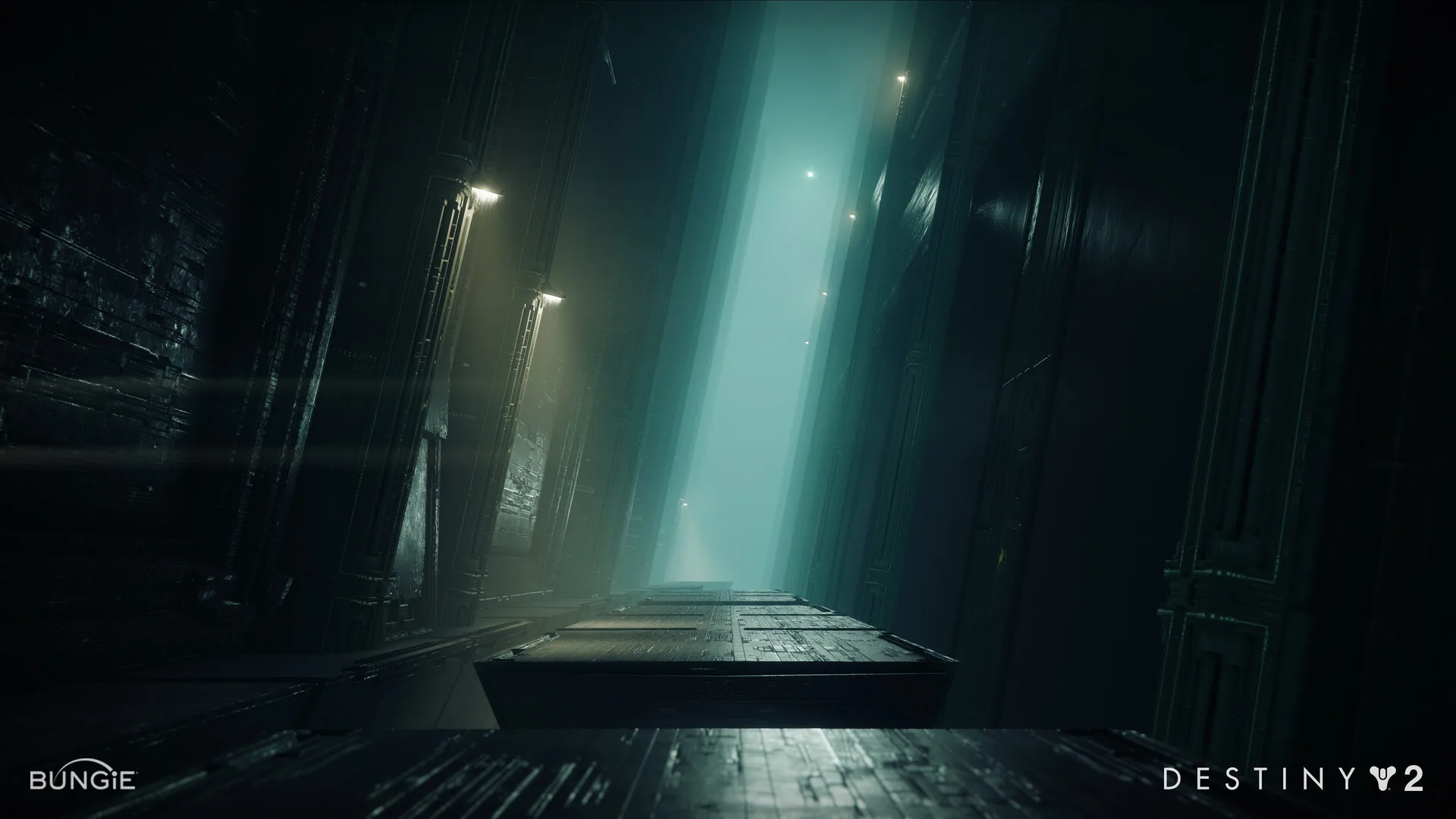This article is about different art roles in game development.Table of Contents
Aspiring game developers may not realize just how many specializations exist within a video game artist career today. Modern game-dev studios offer over 20 distinct game art jobs! And your initial specialization isn’t a lifetime commitment; the game industry’s rapid evolution allows for transitions between roles throughout your game artist career. Whether you’re new to game development or seeking the right fit for your skills, let’s explore these diverse video game art roles and their unique contributions to game development.

Having worked in game development for years, I’ve witnessed countless artists discover new passions and successfully transition between specializations. From Environment Artists moving into technical roles to Character Artists finding their calling in world building, the possibilities for growth and change are endless.
When considering a career in game art, it’s fascinating to note how playing games can actually help develop crucial skills for the profession. Recent research shows that gaming improves spatial awareness, decision-making, and creative problem-solving – all essential abilities for game artists. Learn more about how video games benefit cognitive development and professional skills in my article about the science behind gaming benefits, which explains why many successful game artists started their journey as passionate gamers.
Surprising Science: Video Games Are Good For You
Discover why video games are good for your brain, social skills, and future. Science reveals surprising benefits of gaming backed by research.
Indie vs. AAA: How Studio Size Affects Game Art Careers
Before diving into specific roles, it’s important to understand how studio size affects artist positions and career opportunities. In massive AAA game studios, you might find several artists focusing on highly specific tasks like hair and fur systems or vehicle texturing. Meanwhile, at indie game studios, artists often wear multiple hats—you might be handling everything from character modeling to props creation. Mid-size studios typically strike a balance, where artists specialize but maintain flexibility to support different areas when needed. Keep this context in mind as we explore what different types of Game Artists do in various studio environments.
From Sculpting to Grooming: Exploring Character Art Specializations
The character creation pipeline in modern games involves multiple specialists, each focusing on specific aspects of bringing characters to life. Here’s what different types of Character Artists do in game development:

Character Artists
These specialists are responsible for creating the base meshes and overall look of characters in games. They work closely with Concept Artists to transform 2D designs into 3D models. Their responsibilities include high-poly sculpting, retopology, and ensuring characters meet technical requirements while maintaining artistic quality. Character Artists in AAA game studios often focus on specific aspects like heroes, NPCs, or customization systems.
Creature Artists
While similar to Character Artists, Creature Artists specialize in non-humanoid characters and monsters. They need exceptional understanding of animal anatomy, creature motion mechanics, and organic modeling. Their work often involves creating believable mutations or combinations of different species, designing alien anatomies, and ensuring that fantastic creatures maintain a sense of biological plausibility. In some studios, these specialists also handle companion animals and wildlife.
Character Technical Artists
Often called Character TDs (Technical Directors), these specialists bridge the gap between art and technology in game character development. They handle character rigging, skinning, and solve complex deformation challenges. When you see a character’s muscles flex naturally or clothing move realistically in modern games, that’s often their work. The role of a Character Technical Artist combines artistic understanding with programming skills.
Character Texture Artists
These specialists focus on creating and optimizing textures for game characters, including diffuse maps, normal maps, specular maps, and other material-specific textures. They work closely with Character Artists to ensure that skin, clothing, and accessories have the right surface properties and detail. Their work is crucial for achieving realistic materials and surface variations while maintaining performance requirements in modern game engines.
Grooming Artists
A relatively new specialization that has emerged with advances in hair rendering technology for games. These artists focus on creating realistic hair, fur, and fiber-based assets. They need to balance visual quality with performance, ensuring that complex hair systems don’t overwhelm game performance. This role has become increasingly important as games push for more realistic character representation.
Environment Art Specializations: Building Immersive Game Worlds
Environmental art in games spans from small props to vast landscapes, requiring several specialized roles to create convincing and performant worlds.

Environment Artists
These specialists create and assemble game environments, from indoor spaces to vast open worlds. In different studios, they might be called Environment Artists, World Artists, or Level Artists; the core responsibilities remain similar but vary in scale and focus. They handle everything from modular level assembly to large-scale terrain creation, ensuring visual consistency across the game world. Their work involves close collaboration with Level Designers to create spaces that are both visually stunning and functional for gameplay.
In open-world games, they’re responsible for creating convincing transitions between different biomes and environments. Some might focus on specific areas or levels, while others work on a larger scale with terrain systems and world composition. The role often requires understanding of both artistic principles and technical optimization techniques. Environment Artists need to balance visual quality with performance requirements while maintaining the game’s artistic vision.
Prop Artists
These specialists focus on creating individual assets and modular buildings that populate game environments. This includes furniture, decorative elements, containers, and various interactive objects. Prop Artists ensure environmental storytelling through careful asset creation, working closely with Environment Artists to maintain consistent quality and style across the game world.
Vehicle Artists
A specialized role in game development focused on creating all types of vehicles – cars, aircraft, spaceships, boats, or any other form of transportation. This specialization requires understanding of both technical and artistic aspects of vehicle design, including materials, mechanical parts, damage states, and often complex UV layouts for customization systems. Vehicle Artists usually need to consider both exterior and interior details, as well as animation requirements for moving parts.
Weapon Artists
These specialists create all types of weapons for games, from medieval swords to futuristic energy weapons. The role requires attention to both aesthetic and functional details, including animation attachment points, handling positions, and effects mounting points. Weapon Artists often need to understand real-world reference and mechanical systems while adapting them to match game requirements and art style.
Vista Artists
A specialized role particularly important in open-world games, Vista Artists create distant landscapes, skyboxes, and background elements that players see but don’t directly interact with. They’re masters of creating the illusion of scale while maintaining performance, often using clever techniques to make distant elements look detailed without heavy performance costs.
Environment Texture Artists
Similar to their character counterparts, these specialists create and optimize textures specifically for environmental assets in games. They work with tiling textures and terrain materials, ensuring surfaces react appropriately to different lighting conditions and weather states while maintaining performance requirements.
Technical Artists in Games: Bridging the Gap Between Art and Tech
Technical Artists bridge the gap between art and programming, combining artistic sensibility with technical expertise to solve complex visual challenges in game development.
They play an especially crucial role during engine transitions. Their expertise becomes invaluable when studios make significant technology changes.
Discover how Technical Artists bridge the gap during engine migrations, learn about common pitfalls teams face when switching from Unity to Unreal Engine, and understand how different roles evolve during this transition. Based on insights from Epic Games’ Senior Technical Artist Chris Murphy, this guide helps teams navigate complex technical changes successfully.
Switching from Unity to Unreal Engine: 10 Critical Mistakes
Learn how to avoid top 10 mistakes when switching from Unity to Unreal Engine, as revealed by Epic Games’ Senior Technical Artist at Unreal Fest.

Technical Artists
These versatile specialists serve as the bridge between artists and programmers in game development. They develop and maintain art pipelines, create tools to improve workflow efficiency, and solve technical challenges. Technical Artists often specialize further based on their focus area (characters, tools, VFX), but all share the core responsibility of making sure art assets work efficiently within the game engine.
Shader Artists
Shader Artists create and optimize custom rendering solutions for games. They write shader code to define how surfaces react to light, create special effects, and develop material systems. Their work is crucial for achieving unique visual styles and ensuring that materials behave realistically while maintaining performance. From character skin to water surfaces, Shader Artists help define how everything looks in the final game.
Material Artists
Working closely with Shader Artists, Material Artists create and maintain material libraries and systems for games. They set up complex materials using shader networks, ensure consistent material usage across assets, and optimize material performance. In many studios, they also develop master materials and material functions that other artists can easily use.
Pipeline/Tools Artists
A specialized role focused on developing and maintaining the studio’s art pipeline and tools. They create workflows for asset creation, implement version control solutions for art assets, and ensure smooth integration between different software packages and the game engine. Their work includes:
- Developing custom tools for artists
- Optimizing asset creation workflows
- Managing build and integration systems
- Creating automation solutions
- Maintaining technical documentation
VFX Artists
Visual Effects Artists create dynamic elements that bring life and excitement to the game world. They work on particle systems, environmental effects, ability visuals, and combat impacts. VFX Artists need to understand both artistic principles and technical limitations, often working with shader graphs, and texture sheets. Their work includes everything from subtle environmental effects like dust and leaves to spectacular spell effects and explosions. In modern game development, VFX Artists often work closely with Technical Artists to create systemic effects that can be reused and modified across different scenarios, balancing visual impact with performance optimization.
Lighting Artists
These specialists craft the mood and atmosphere of game environments through strategic light placement and setup. They work with dynamic lighting systems, optimize shadows, and ensure consistent lighting across different times of day. Lighting Artists often collaborate closely with Technical Artists to achieve the desired visual quality while maintaining performance budgets. Their responsibilities include:
- Setting up dynamic lighting systems
- Creating time-of-day cycles
- Establishing mood and atmosphere through light
- Working with post-processing effects to enhance the final look
Visualizing Games: The Roles of Concept and UI/UX Artists
These roles focus on establishing visual direction, creating user interfaces, and producing supporting artwork that shapes both the game’s look and player experience.

Concept Artists
Coming in at the early stages of game development, Concept Artists establish the visual foundation for the entire game. Many studios differentiate between:
- 2D Concept Artists: Using traditional artistic skills for rapid ideation and exploration of characters, environments, props, and key moments
- 3D Concept Artists: Creating detailed 3D mockups to test ideas in engine and provide more production-ready reference
Both types work closely with Art Director to define the game’s visual style and provide reference materials for other artists. While some Concept Artists are Generalists, others specialize in specific areas like characters, environments, or props.
UI/UX Artists
These specialists create all the visual elements players interact with directly in games – menus, HUDs, icons, and other interface elements. They need to balance artistic design with user experience principles, ensuring interfaces are both visually appealing and functional. Their work includes:
- Menu systems and layouts
- In-game HUD elements
- Interactive UI components
- UI animation and effects
Marketing Artists
Also known as Promo Artists, these specialists create high-quality artwork for game marketing materials, often pushing visual quality beyond what’s possible in real-time rendering. Their work includes:
- Key art for marketing campaigns
- Store page assets
- Social media visuals
- Promotional materials and box art
Illustrators
While similar to Concept Artists, illustrators often focus on creating polished, final artwork for various game needs:
- Loading screens
- Card art for collectible systems
- Achievement icons
- Marketing illustrations
Some studios combine this role with Marketing Artists, while larger studios maintain separate teams.
Cinematic Artists
These specialists focus on creating narrative sequences and cutscenes that advance the game’s story. They combine skills in animation, camera work, and storytelling to create compelling cinematics. Their work often bridges the gap between gameplay and storytelling, requiring understanding of both film techniques and game engine capabilities.
Career Growth and Specialization Changes in Game Art
Understanding various art specializations is important, but equally crucial is knowing how careers typically evolve in game development. Let’s explore the Game Artist career path from entry level to leadership positions.

Career Progression in Game Art
Most art roles in game development follow a similar progression path:
- Trainee/Junior: Learning fundamentals, working on smaller tasks under supervision, understanding pipeline and workflow
- Mid-level: Handling complete assets independently, contributing to major features, developing specialization expertise
- Senior: Leading subsystems, mentoring juniors, setting quality standards, solving complex technical and artistic challenges
- Principal: Making strategic decisions, defining pipelines, driving technical and artistic innovation
- Lead: Guiding and supervising teams, managing resources, ensuring project vision, coordinating with other departments
Changing Specializations in Game Development
One of the most exciting aspects of game art careers is the ability to transition between different specializations. This typically happens in several ways:
- Natural Evolution: For example, an Environment Artist becoming interested in shader development and gradually moving into a Technical Art role
- Technology Shifts: New tools and techniques creating new specializations, like traditional Texture Artists moving into material development
- Project Needs: Sometimes, project requirements push artists to develop new skills, leading to natural role transitions
Tips for Specialization Changes in Game Art
- Learn fundamentals of your target specialization while in your current role
- Take on hybrid tasks that combine both specializations when possible
- Be open with your team about your interests – many studios support internal growth
- Be patient – specialization changes usually happen gradually
Remember that most skills are transferable. Understanding of composition, color theory, and technical constraints remains valuable across different specializations in game development.
The Future of Game Art: Trends & Opportunities for Aspiring Artists
After covering all these specializations, you might feel overwhelmed by the choices. Don’t be! This variety of roles actually works to your advantage. Here’s why:

The Reality of Modern Game Development
The games industry continues to evolve, creating new specializations while merging others. Tools that seemed essential five years ago might be obsolete now, while completely new workflows emerge regularly. This constant evolution means there’s always room for growth and adaptation in game art careers.
Finding Your Place in Game Development
Start by exploring what interests you most. Are you fascinated by characters? Love creating environments? Remember that your first role is just that – a start. Many successful Game Artists began in one specialization and discovered their true passion while working.
The Multi-Specialization Advantage
Whether you end up in a AAA studio focusing on a highly specialized role or become a 3D Generalist in a smaller team, understanding how different specializations connect helps tremendously. This knowledge makes you a better collaborator and opens more opportunities for your career growth in game development.
Looking Forward
The game industry keeps growing, and the demand for artists continues to rise. New technologies like real-time ray tracing, procedural generation, and AI tools are creating fresh opportunities and specializations. Stay curious, keep learning, and remember that your career path can be as unique as you are.
Remember, while this guide presents these roles as distinct specializations, the boundaries between them often blur, especially as you advance in your career. The key is to remain adaptable and never stop learning – that’s what makes a career in game art both challenging and rewarding!
Every senior artist started as a junior. The key is to take that first step and keep moving forward. Good luck on your game art journey!
Frequently Asked Questions about Game Artist Careers
How do I choose a game art specialization?
Consider your interests and strengths. Are you passionate about characters, environments, or the technical aspects of game art? Research different specializations, experiment with various art styles, and build a portfolio that showcases your skills in your chosen area.
What’s the difference between game art roles in indie and AAA studios?
Studio size significantly impacts the scope and specialization of Game Artist roles. Indie studios often require artists to wear multiple hats, while AAA studios allow for hyper-specialization.
What are the career paths for game artists?
Most game art roles follow a typical progression, starting as a junior artist, then advancing to mid-level, and eventually reaching senior positions. From there, artists can potentially move into lead roles, or specialized positions like Principal Artist, depending on their career goals and the studio’s structure.
Can I change my specialization later in my career?
Absolutely! The gamedev industry is constantly evolving, and many artists transition between specializations throughout their careers.
Want to dive deeper into game art specializations? I regularly share detailed breakdowns of game art techniques and career advice in my newsletter. Subscribe below to join other Game Artists learning and growing together.
Have questions about specific game artist roles or transitioning between specializations? Feel free to comment below – I’m always happy to share insights from my experience in game development.
Want more insights like this? Subscribe to my newsletter for weekly updates!






